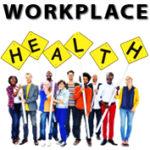
by ABILITY GROUP | Oct 13, 2016 | Health & Wellbeing, Work Health & Safety, Work Health Program
 There is a lot of talk these days in relation to if businesses have a responsibility in identifying poor health habits in their workforce and therefore can facilitating a healthy workplace help minimise related issues. Numerous studies tell businesses that invest in the employees’ health and wellbeing will have a healthier, happier, more engaged and productive workforce. Reducing business costs of employee absences, presenteeism and injury can become a focus however there are other benefits. A Comcare report commences “Strong evidence shows that good employee health and wellbeing boosts organisational health.” Ok, sounds great yet what are signs of an unhealthy workplace and what can be done to address.
There is a lot of talk these days in relation to if businesses have a responsibility in identifying poor health habits in their workforce and therefore can facilitating a healthy workplace help minimise related issues. Numerous studies tell businesses that invest in the employees’ health and wellbeing will have a healthier, happier, more engaged and productive workforce. Reducing business costs of employee absences, presenteeism and injury can become a focus however there are other benefits. A Comcare report commences “Strong evidence shows that good employee health and wellbeing boosts organisational health.” Ok, sounds great yet what are signs of an unhealthy workplace and what can be done to address.
(more…)
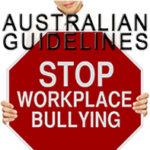
by ABILITY GROUP | Sep 22, 2016 | Bullying, Claim costs, Claim management, Injury Prevention, Mental Health, Work Health & Safety, Workers Compensation, Workplace safety
 In Australia, all employers have a responsibility to prevent discrimination, harassment or bullying from occurring in the workplace and to make sure that their employees, and people who apply jobs with them, are treated fairly. Under Work Health and Safety (WHS) legislation, employers and employees are required to comply with practices and behaviour that promote health and safety in the workplace. Because of this responsibility, employers are required to minimise or if possible eliminate the risks to employees’ health and safety caused by workplace bullying. Safe Work Australia has recently updated two publications on workplace bullying to provide guidance and assistance for managers and workers on how to prevent, respond and deal with this issue.
In Australia, all employers have a responsibility to prevent discrimination, harassment or bullying from occurring in the workplace and to make sure that their employees, and people who apply jobs with them, are treated fairly. Under Work Health and Safety (WHS) legislation, employers and employees are required to comply with practices and behaviour that promote health and safety in the workplace. Because of this responsibility, employers are required to minimise or if possible eliminate the risks to employees’ health and safety caused by workplace bullying. Safe Work Australia has recently updated two publications on workplace bullying to provide guidance and assistance for managers and workers on how to prevent, respond and deal with this issue.
(more…)

by Marc Ring | Sep 16, 2016 | Bullying, Claim costs, Claim management, Injured Worker, Mental Health, Occupational Violence, Work Health & Safety, Workers Compensation, Workplace safety
 Occupational violence is an incident where a worker is physically attacked in the workplace or during work related activities. It also extends to if a worker is threatened in a way that causes them to reasonably believe they are in danger of being physically attacked. With an ageing population, ensuring aged and other care workers are able to cope with the at times aggressive behaviour associated with some types of dementia or disabilities is an important issue for care providers. Recent data shows care workers represent more than 9 percent of NSW workers compensation claims with over 12,000 physical and mental claims made in the recent 3 year period. Addressing workplace bullying and violence be challenging yet SafeWork Australia provide recommendations.
Occupational violence is an incident where a worker is physically attacked in the workplace or during work related activities. It also extends to if a worker is threatened in a way that causes them to reasonably believe they are in danger of being physically attacked. With an ageing population, ensuring aged and other care workers are able to cope with the at times aggressive behaviour associated with some types of dementia or disabilities is an important issue for care providers. Recent data shows care workers represent more than 9 percent of NSW workers compensation claims with over 12,000 physical and mental claims made in the recent 3 year period. Addressing workplace bullying and violence be challenging yet SafeWork Australia provide recommendations.
(more…)
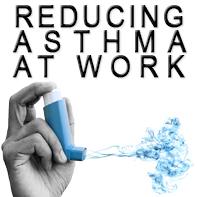
by ABILITY GROUP | Aug 11, 2016 | Claim costs, Claim management, Injured Worker, Injury Prevention, Work Health & Safety, Workers Compensation
 Occupational Asthma (a new-onset asthma in which the underlying cause is exposure to an agent at work) is considered a work related illness and has led to numerous workers compensation claims in different industries over the past decade. Employers are legally responsible for informing their staff of general and specific hazards connected with their job and for providing employees with a safe and healthy workplace. Recent studies show over 40% of workers are exposed to one or more asthmagens in their workplace. According to Safe Work Australia workers in the farming, metal or wood and food preparation industries are most likely to be exposed. Businesses can take steps to minimise exposure to asthmagens in their workplace.
Occupational Asthma (a new-onset asthma in which the underlying cause is exposure to an agent at work) is considered a work related illness and has led to numerous workers compensation claims in different industries over the past decade. Employers are legally responsible for informing their staff of general and specific hazards connected with their job and for providing employees with a safe and healthy workplace. Recent studies show over 40% of workers are exposed to one or more asthmagens in their workplace. According to Safe Work Australia workers in the farming, metal or wood and food preparation industries are most likely to be exposed. Businesses can take steps to minimise exposure to asthmagens in their workplace.
(more…)
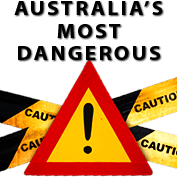
by ABILITY GROUP | Jul 25, 2016 | Injured Worker, Injury Prevention, Work Health & Safety, Workers Compensation, Workplace safety
 Irrespective of the size of your business or industry you work in, workplace risks exist. Businesses that adopt a proactive risk management approach will typically minimise workplace risks, injuries and claims. Regrettably accidents do occur and in tragic situations the death of a worker has impacts beyond the obvious. Fatalities in the workplace not only affect the immediate family, they also cause distress to colleagues, employers and friends. No worker nor their family should face the risk of not coming home from work. We promote it is essential all Australian workplaces take every precaution to ensure their employees return home safe at the end of every day. So what are Australia’s most dangerous industries and the common cause of fatalities?
Irrespective of the size of your business or industry you work in, workplace risks exist. Businesses that adopt a proactive risk management approach will typically minimise workplace risks, injuries and claims. Regrettably accidents do occur and in tragic situations the death of a worker has impacts beyond the obvious. Fatalities in the workplace not only affect the immediate family, they also cause distress to colleagues, employers and friends. No worker nor their family should face the risk of not coming home from work. We promote it is essential all Australian workplaces take every precaution to ensure their employees return home safe at the end of every day. So what are Australia’s most dangerous industries and the common cause of fatalities?
(more…)
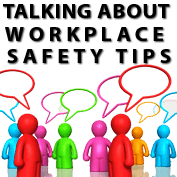
by Marc Ring | Jul 18, 2016 | Work Health & Safety, Workplace safety
 Raising a workplace safety concern with your boss can sometimes seem like a daunting prospect. Not doing so, however, can mean a dangerous incident goes unresolved, potentially injuring you or your co-workers. It could be something like a machine that is missing protective guards, dangerous movement of plant, poor housekeeping presenting trip hazards or speaking up if you see someone being bullied. Alternatively you might feel your training for a particular task was inadequate or you need more help to do a job safely. Whatever the issue, it is important to remember everyone has a right to work in a fair, just and safe workplace. Employers are obligated (as far as is reasonably practicable) to provide such an environment. Read more for tips on how to talk about safety.
Raising a workplace safety concern with your boss can sometimes seem like a daunting prospect. Not doing so, however, can mean a dangerous incident goes unresolved, potentially injuring you or your co-workers. It could be something like a machine that is missing protective guards, dangerous movement of plant, poor housekeeping presenting trip hazards or speaking up if you see someone being bullied. Alternatively you might feel your training for a particular task was inadequate or you need more help to do a job safely. Whatever the issue, it is important to remember everyone has a right to work in a fair, just and safe workplace. Employers are obligated (as far as is reasonably practicable) to provide such an environment. Read more for tips on how to talk about safety.
(more…)

 There is a lot of talk these days in relation to if businesses have a responsibility in identifying poor health habits in their workforce and therefore can facilitating a healthy workplace help minimise related issues. Numerous studies tell businesses that invest in the employees’ health and wellbeing will have a healthier, happier, more engaged and productive workforce. Reducing business costs of employee absences, presenteeism and injury can become a focus however there are other benefits. A Comcare report commences “Strong evidence shows that good employee health and wellbeing boosts organisational health.” Ok, sounds great yet what are signs of an unhealthy workplace and what can be done to address.
There is a lot of talk these days in relation to if businesses have a responsibility in identifying poor health habits in their workforce and therefore can facilitating a healthy workplace help minimise related issues. Numerous studies tell businesses that invest in the employees’ health and wellbeing will have a healthier, happier, more engaged and productive workforce. Reducing business costs of employee absences, presenteeism and injury can become a focus however there are other benefits. A Comcare report commences “Strong evidence shows that good employee health and wellbeing boosts organisational health.” Ok, sounds great yet what are signs of an unhealthy workplace and what can be done to address.

 In Australia, all employers have a responsibility to prevent discrimination, harassment or bullying from occurring in the workplace and to make sure that their employees, and people who apply jobs with them, are treated fairly. Under Work Health and Safety (WHS) legislation, employers and employees are required to comply with practices and behaviour that promote health and safety in the workplace. Because of this responsibility, employers are required to minimise or if possible eliminate the risks to employees’ health and safety caused by workplace bullying. Safe Work Australia has recently updated two publications on workplace bullying to provide guidance and assistance for managers and workers on how to prevent, respond and deal with this issue.
In Australia, all employers have a responsibility to prevent discrimination, harassment or bullying from occurring in the workplace and to make sure that their employees, and people who apply jobs with them, are treated fairly. Under Work Health and Safety (WHS) legislation, employers and employees are required to comply with practices and behaviour that promote health and safety in the workplace. Because of this responsibility, employers are required to minimise or if possible eliminate the risks to employees’ health and safety caused by workplace bullying. Safe Work Australia has recently updated two publications on workplace bullying to provide guidance and assistance for managers and workers on how to prevent, respond and deal with this issue.
 Occupational violence is an incident where a worker is physically attacked in the workplace or during work related activities. It also extends to if a worker is threatened in a way that causes them to reasonably believe they are in danger of being physically attacked. With an ageing population, ensuring aged and other care workers are able to cope with the at times aggressive behaviour associated with some types of dementia or disabilities is an important issue for care providers. Recent data shows care workers represent more than 9 percent of NSW workers compensation claims with over 12,000 physical and mental claims made in the recent 3 year period. Addressing workplace bullying and violence be challenging yet SafeWork Australia provide recommendations.
Occupational violence is an incident where a worker is physically attacked in the workplace or during work related activities. It also extends to if a worker is threatened in a way that causes them to reasonably believe they are in danger of being physically attacked. With an ageing population, ensuring aged and other care workers are able to cope with the at times aggressive behaviour associated with some types of dementia or disabilities is an important issue for care providers. Recent data shows care workers represent more than 9 percent of NSW workers compensation claims with over 12,000 physical and mental claims made in the recent 3 year period. Addressing workplace bullying and violence be challenging yet SafeWork Australia provide recommendations.
 Occupational Asthma (a new-onset asthma in which the underlying cause is exposure to an agent at work) is considered a work related illness and has led to numerous workers compensation claims in different industries over the past decade. Employers are legally responsible for informing their staff of general and specific hazards connected with their job and for providing employees with a safe and healthy workplace. Recent studies show over 40% of workers are exposed to one or more asthmagens in their workplace. According to Safe Work Australia workers in the farming, metal or wood and food preparation industries are most likely to be exposed. Businesses can take steps to minimise exposure to asthmagens in their workplace.
Occupational Asthma (a new-onset asthma in which the underlying cause is exposure to an agent at work) is considered a work related illness and has led to numerous workers compensation claims in different industries over the past decade. Employers are legally responsible for informing their staff of general and specific hazards connected with their job and for providing employees with a safe and healthy workplace. Recent studies show over 40% of workers are exposed to one or more asthmagens in their workplace. According to Safe Work Australia workers in the farming, metal or wood and food preparation industries are most likely to be exposed. Businesses can take steps to minimise exposure to asthmagens in their workplace.
 Irrespective of the size of your business or industry you work in, workplace risks exist. Businesses that adopt a proactive risk management approach will typically minimise workplace risks, injuries and claims. Regrettably accidents do occur and in tragic situations the death of a worker has impacts beyond the obvious. Fatalities in the workplace not only affect the immediate family, they also cause distress to colleagues, employers and friends. No worker nor their family should face the risk of not coming home from work. We promote it is essential all Australian workplaces take every precaution to ensure their employees return home safe at the end of every day. So what are Australia’s most dangerous industries and the common cause of fatalities?
Irrespective of the size of your business or industry you work in, workplace risks exist. Businesses that adopt a proactive risk management approach will typically minimise workplace risks, injuries and claims. Regrettably accidents do occur and in tragic situations the death of a worker has impacts beyond the obvious. Fatalities in the workplace not only affect the immediate family, they also cause distress to colleagues, employers and friends. No worker nor their family should face the risk of not coming home from work. We promote it is essential all Australian workplaces take every precaution to ensure their employees return home safe at the end of every day. So what are Australia’s most dangerous industries and the common cause of fatalities?
 Raising a
Raising a